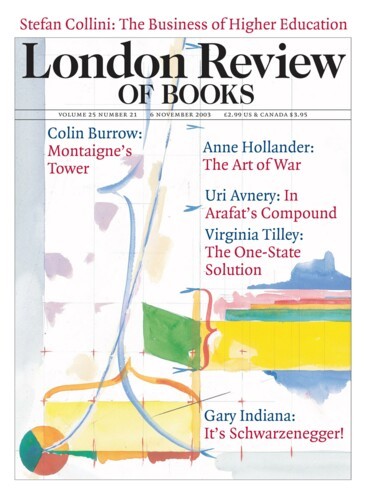Kim, you may remember, leaves school to work for the Survey of India. I have no idea how many of the Survey’s employees were spies, but one of them did do the kind of secret work Kipling describes. He was a schoolmaster, Nain Singh. In 1865 he entered Tibet – forbidden to foreigners on pain of death – disguised as a lama, and mapped Lhasa. Like Kim, he had learned to measure miles by walking without ever altering his stride; like Kim, he used a rosary to keep count of their number. And he made maps – although not, I think, with a Survey issue paintbox like Kim’s. But while adventures like his in the northern hills and mountains – the last tranche of the Survey of India – are in one way the most romantic part of the enterprise, equally romantic in another way was the great task of triangulation, the calculation of the framework within which all the geographical detail of India and its relation to the rest of the world could be established.
Accuracy has a conceptual beauty which was once visible in the look of chronometers and theodolites. Although electronic instruments have achieved a degree of accuracy that older technologies only approximated, this achievement is not reflected in the appearance of the grey boxes that house them. The analogue information read from sliding scales and verniers has been replaced by digital information read off a liquid crystal display and the nature of the units we use to measure distances and intervals has also changed. The metre is defined in terms of the length of the path followed by light in a vacuum for a fraction of a second; the second as ‘the duration of 9,192,631,770 periods of the radiation corresponding to the transition between the two hyperfine levels of the ground state of the cesium 133 atom’. We measure the physical world against its own invariant elements. The old units depended on lengths of metal kept at precise temperatures, or on the division of the cycles – by no means entirely regular – of our gently decelerating planet. The masters of the heroic age of measurement, from Harrison in the second half of the 18th century, to the surveyors who completed the triangulation of India in the later part of the 19th, battled to get their digital information – the figures they used for their calculations – out of analogue instruments. The brass or steel cogs, balance wheels and finely divided scales of their chronometers, theodolites, levels, transits, compasses and so forth still symbolise precision more tellingly than infinitely more accurate digital read-outs. If you doubt the power of the aesthetics of clockwork, look at the prices in a smart watchmaker’s shop.
William Lambton’s Great Theodolite, shown here, 36 inches across, its divisions so fine that they must be read through a microscope, was the most famous of the tools used in the Survey of India, the story of which is the subject of The Great Arc, an exhibition marking the 200th anniversary of the beginning of the Survey, at the Atlantis Gallery in London (146 Brick Lane, E1 until 12 November). ‘The Great Arc’ because one aim of the triangulation was to measure as long an arc as possible on a meridian, so helping to determine the exact extent to which the earth departs in shape from a sphere. This ambitious project led to the pursuit of a degree of accuracy beyond ordinary military needs. The Survey, like putting a man on the moon, was undertaken only partly for utilitarian purposes. There were military subplots in both cases, but correcting the inaccurate cartography which had played a part in the British defeat in 1769 at the hands of Tipu Sultan, the Tiger of Mysore, did not require the exquisite precision which led Sir George Everest, Lambton’s successor as the head of the Survey, to spend nine years planning, and four months carrying out, an astronomical survey which involved Everest and his assistant Lieutenant Waugh working at stations 398 miles apart, simultaneously to observe 36 stars for 48 successive nights.
With perfectly precise instruments, all you need is a single base-line, a triangle built on it, other triangles built on that triangle, and so on. The whole grid should be rigid, its angles and distances fixed and proportionate. But no matter how often you take back sights, no matter how carefully you read your scales, variation creeps in. The simple picture is replaced by one in which the atmosphere takes on the character of a refracting, wobbly jelly and instruments themselves become uncertain.
From the measurement of the base-line – aligning the steel chain and later the bimetallic bars constructed to counteract variations in temperature – through journeys up and down the country, building towers where the terrain was flat, working at night when it was found that the glow of a distant lamp was a better mark than a staff in the hot, daytime air, and calculating, endlessly calculating and recalculating: all this was a feat of exploration in which attacks from tigers, malaria and hunger seem minor hazards. The pursuit of high degrees of accuracy in the end threw up an entity – ‘the highest mountain in the world’ – not as a result of exploration on the ground, but thanks to analysis of the figures. The old brass and faded paper in this exhibition are the physical leftovers of a grand, almost lunatic pursuit of perfection. Just as an accurate quartz watch bought for a fiver takes none of the beauty away from Harrison’s clockwork, so the remote sensing images and satellites which are the subsidiary subject of this exhibition detract nothing from an undertaking which survives as an achievement of conceptual art as well as living cartography.
Send Letters To:
The Editor
London Review of Books,
28 Little Russell Street
London, WC1A 2HN
letters@lrb.co.uk
Please include name, address, and a telephone number.


